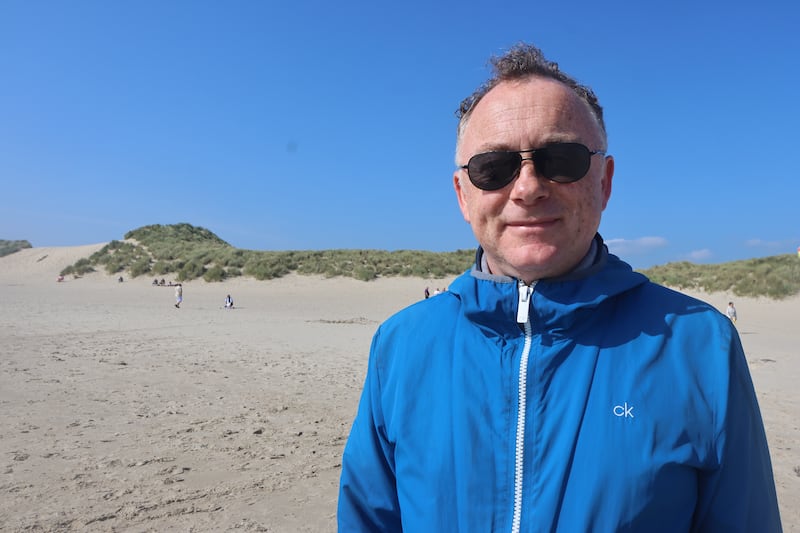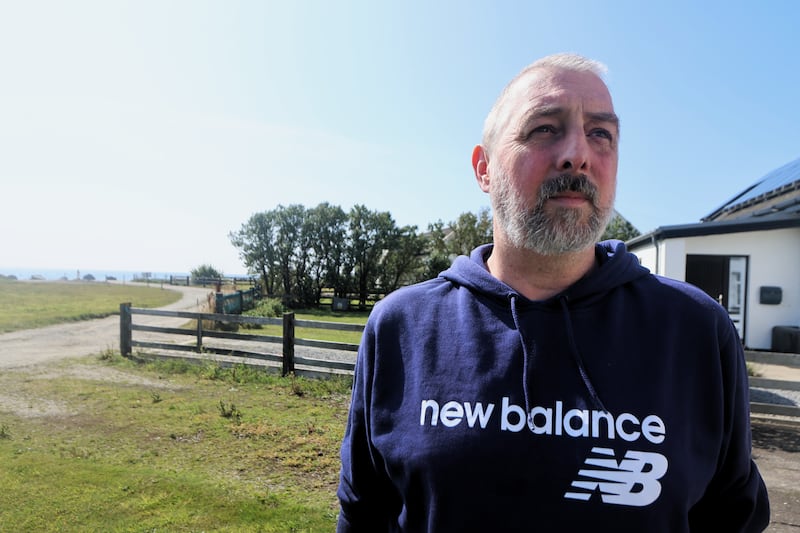There is probably not an opening sequence in the whole of cinema history as famous as the opening sequence in the 1997 film Saving Private Ryan.
Director Steven Spielberg’s attempts to recreate the horrors of war and the hazards of landing on Omaha Beach on D-Day were all filmed on Curracloe beach in Co Wexford.
While scouting locations for the film, Spielberg was forced to rule out Normandy where the actual D-Day landings took place because the coast had become overdeveloped. Instead, he settled on the pristine location of Curracloe, which stretches for 11km and was shallow enough to allow for second World War-era landing craft to come ashore.
The beach as a film location proved to be so successful that scenes from the Hollywood adaptation of Colm Tóibín’s novel Brooklyn were also filmed there in 2015.
READ MORE
Like many beaches in Co Wexford, though, Curracloe is not what it used to be. It is in reality two beaches, Curracloe and Ballinesker, with a headland at one end and a forest at another known as Raven Point. It was planted in the 1930s and 1940s with pine and evergreen trees to guard against erosion.
[ Should we treat greenhouse gas emissions like smoking?Opens in new window ]
The Wexford coast is disappearing, in some places, by an average of about 50cm a year as a result of coastal erosion.
Coastal erosion is a natural process that has been going on for billions of years, but which has accelerated recently because of the frequency and intensity of storms – 12 in the last season alone – and this is being attributed to climate change.

Eight years ago a severe storm removed more than a metre of soft cliff edge at Ballinesker beach and uprooted trees, which further exposed the beach to erosion. A public walkway into the beach was also torn up by storms.
“I have noticed at Ballinesker beach the dunes have been eaten all the way back. Every winter you go down to the forest there are trees falling into the sea,” said Edel Moran, who has been living in Curracloe for 20 years.
“Every year you come you can see it being eaten further and further back. The dunes were further forward than they are now. Down at the forest there are no trees protecting it from the sea any more. There was a really strong storm there and it ate the forest back further. It unearthed posts that were put down to protect it.”
Preserving Wexford’s coasts is the chief task of Wexford County Council’s coastal engineer George Colfer. He estimates that 100km of Wexford’s 260km coast is vulnerable to erosion.
Wexford’s coast is “soft”, he explains, consisting mostly of dunes and soft clay cliffs. It is prone to erosion in a way the harder coasts of the west of Ireland are not despite being exposed to Atlantic storms.
The council will restore a section of dune on Curracloe beach both as an act of preservation, but also to raise awareness of the problems of coastal erosion. That scheme is due to start this month. The council will work with the local community to replant Marram grass, the spiky grass which helps keep dunes intact.
To what extent is erosion a natural process? “Erosion has always been happening. Over the last 120 years the evidence is that it has definitely accelerated. The real damage is done when you have a high tide combined with storms and particularly when you have them coming in directly from the sea with an easterly wind,” he said.
One of Wexford’s best-known beaches, Courtown, has effectively disappeared. Curracloe lifeguard Harry McGuckin says over the years that he has served there has been a change. “The beach in Courtown has just gone away. That used to be a lifeguarded beach before my time, but there isn’t one any more,” he said.
The problem is worst at a place known as Bastardstown beach near Kilmore or by the more polite designation of Seaview. Rock armour – huge boulders – was placed along part of the coast a decade ago to preserve a road into a housing estate. Emergency works were done earlier this year to preserve the roads into the development.
Here a housing development of 14 homes sits about 80m from the sea. Some years ago they were 75 metres farther from the sea behind a raised embankment. Earlier this year Storm Kathleen came along and took a bite out of the cliffs. Residents of the estate are now on their fifth road in recent decades, the others having been eroded away.
Council officials measured the erosion and found to their astonishment that the sea had moved forward nine metres in a year.
Resident Andrew Grant said the foam from the spray during Storm Kathleen was such that it felt like it was snowing heavily. He bought in the Seaview development six years ago when the sea was much farther away and was assured by locals there was no threat.

“It’s been quite drastically coming in. We are very worried about if we will have a place to live in the future. Over the last six years it has been very tough in the winter months. The kids are scared about the coastal erosion.”
Jane Corboy and her husband, Denis, moved into their dream house three years ago which is overlooking the beach. “I had no idea, I am ashamed to say,” she said of what she knew about coastal erosion before she moved into the house.
“What has happened in the last three years has been unbelievable. Last September a storm blew in our window.”
Wexford County Council has already anticipated the impact of climate change. Seaview would never get planning permission now. The minimum setback from the shoreline for new housing has gone from 50m to 250m.
Colfer is hopeful the Office of Public Works will supply the funding for rock armour that will save Seaview, but one-off housing and smaller developments of a few homes may not be so lucky in the future.
“There will be tough decisions that will have to be made over the coming years. There is a lot of examples of one-off houses along the coast and the economic model of saving them just doesn’t add up,” he said.
- Sign up for push alerts and have the best news, analysis and comment delivered directly to your phone
- Find The Irish Times on WhatsApp and stay up to date
- Our In The News podcast is now published daily – Find the latest episode here

















